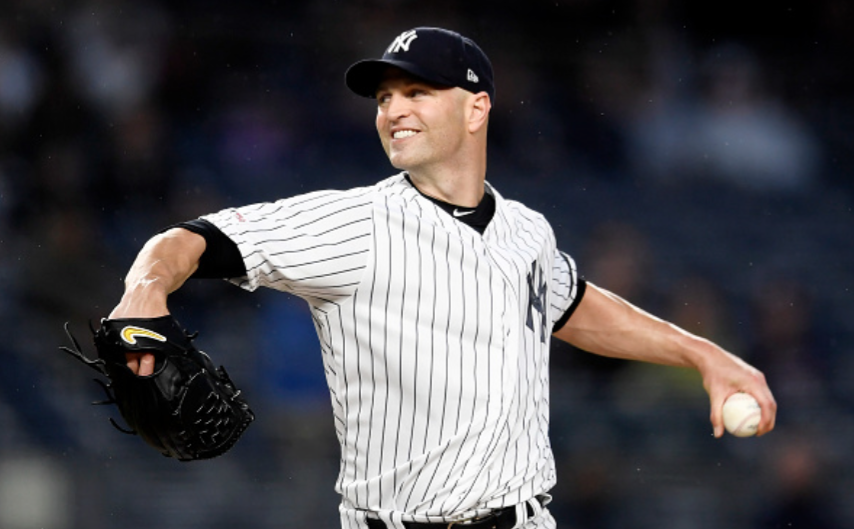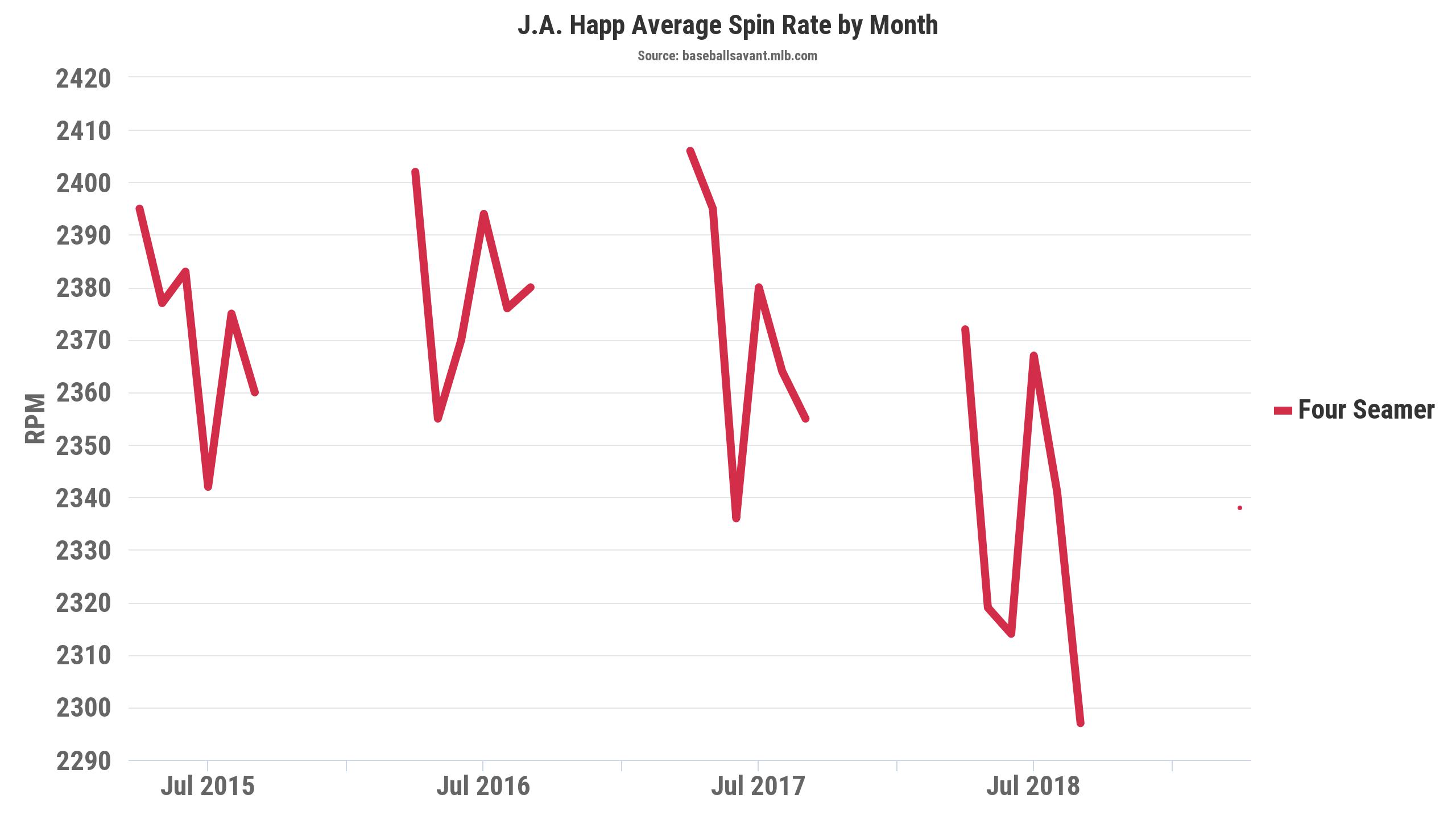In the early part of the season with so many injuries, especially to staff ace Luis Severino, the other starting pitchers have had to step up. And to their credit, they almost all have.
Domingo German has been incredible thus far and looks like he might be harnessing his raw stuff. With the exception of one start, Masahiro Tanaka has pitched like an ace. James Paxton has adjusted to New York very well, and has looked dominant most of the time. Old reliable CC Sabathia looks great in his farewell tour. The one exception has been J.A. Happ, that is until recently at least.
With all the injuries and jokes about how the Yankees are basically the RailRiders right now, it has been easy to miss that Happ has been pretty good lately. I know quality starts is a dumb metric, but he has thrown three in a row. More importantly, two of them have been 7.0+ innings and 2 or fewer runs. As for how he’s doing it: the answer has two parts. 1. Fewer four-seam fastballs and 2. A new approach every start.
Here, take a look at his pitch mix lately:
Okay, so you can see how in 2018 he was super reliant on that four-seamer and actually upped the usage as the season went on. In his first three starts this year, he tried the same approach and got shelled. It is apparent that he made a change during the 4/17 start against Boston to throw fewer four-seamers. Let’s go game-by-game to see what he did
4/17 Boston
Line: 6.1 IP, 6H, 3ER, 4K, 1BB
In this start, you see he shelved his four-seamer for his sinker or two-seamer. He still threw about 70% fastballs, but he threw almost three times as many two-seamers as four-seamers. You also see a spike in his slider percentage in this start. He threw over 25% sliders for the first time in a very long time.
4/22 Angels
Line: 7.0IP, 3H, 2ER, 5K, 2BB
In this start, we see some regression towards normal with the pitch mix. The four-seamer is back up, but only to about 45%. And the sinker usage is down a little from the Boston start, but still very strong at around 30%. So the total percentage of fastballs is the same, but the distribution is different. The interesting thing in this start is that the slider uptick last time appears to be a blip, and Happ actually started to up his changeup usage in this start. As we’ll see in his next start, that changeup increase is going worth monitoring as we go on.
4/27 Giants
Line: 7.0 IP, 5H, 0ER, 2K, 0BB
So who would have pegged Happ as the first Yankee pitcher to go 7 innings this season? Yeah, nobody but here we are somehow. This pitch mix is fairly similar to last time out, but the changeup usage has overtaken the slider as the primary off-speed pitch. Looking at pitch usage data back to last year, Happ alternately uses his slider and changeup more depending on the start. It will be interesting to see if he continues using the changeup more or goes back to a slider heavy approach with his off-speed pitches.
Why was this necessary?
Well, because he sucked before. More accurately, he hadn’t completed 5 innings in any start and had brutal outings against the White Sox and the Orioles. One possible reason why is his declining spin rate. Take a look at this graph:
This graph shows us Happ’s fourseam spin rate by month. That tiny little dot on the right is 2019. What is clear in this graph is that his spin rate has been declining and continues to do so. For a pitcher like Happ who has below average fastball velocity, spin rate is how he gets the job done. And for a guy who throws over 70% fastballs, he needs them to be really good. In the latter parts of last season, and early on here, that spin rate has not been what it used to be.
With decreasing spin rates, it makes sense to throw more sinkers and two-seamers because these fastballs actually work better with a lower spin rate. You want high spin on a four-seam fastball to give it rising action, and low spin rate on a sinker so that it drops more. If Happ has noticed more damage against his four-seamer, increasing usage on the two-seamer or sinker has been a great adjustment.
The really concerning thing in that graph is how the spin rate has decreased not only every year, but as the year goes on. Right now he’s already started at a lower level than he has in previous years, and I am concerned that his spin rate will drop further the later we get into the season. Which means he may need to continue lowering his four-seam rate since it will not be as effective. The real concern is actually the next two seasons, because we need to see if Happ is a guy who can succeed without his trademark sneaky effective four-seam fastball.
The encouraging sign is that Happ has noticed the issue and some adjustments have been helpful thus far. Whether it is increasing the two-seamer/sinker rate, or adjusting how he uses his off-speed pitches, it has worked thus far in our tiny sample size of three starts. What I am interested in is seeing if he settles into a new pitch usage or uses a different gameplan every start. The Boston game was very heavy on two-seamers and sliders whereas both games against the Angels and Giants had increased changeup usage and slightly more four-seamers than two-seamers.
It also makes sense that a more balanced approach will be beneficial to late-career J.A. Happ to keep hitters off-balance. We’ve seen CC Sabathia adjust when his dominant four-seamer was no longer the pitch it used to be and he started using a cutter to great effect. We’ll see if Happ has to and is able to follow a similar pattern. Hopefully the results from the last three starts continue and Happ has indeed found a way to adjust to his new reality.
You can contact Rohan on Twitter @rohanarcot20






